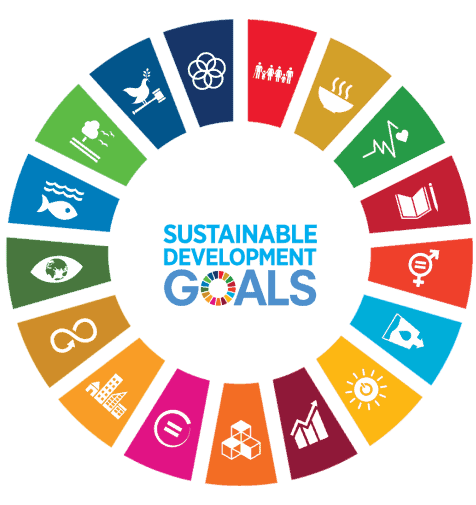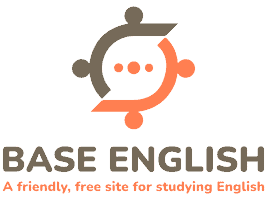Sustainable Development Goals
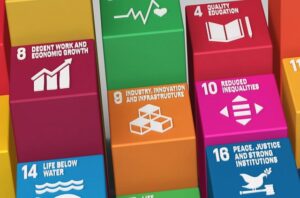
SDGs (Beginner – A2)
The Sustainable Development Goals are a collection of 17 global goals. The goals were made to help create…

SDG 1 (Beginner – A2)
SDG 1 is the first of the 17 Sustainable Development Goals created by the United Nations in 2015. Goal 1 is to end all forms of poverty…
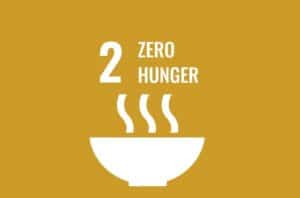
SDG 2 (Beginner- A2)
SDG 2 is the second of the 17 Sustainable Development Goals created by the United Nations in 2015. Goal 2 is to have no hunger…

SDG 3 (Beginner- A2)
Over the last 15 years, the number of childhood deaths has been reduced by 50%. This proves that it is possible to win the fight…

SDG 4 (Beginner- A2)
Children who learn to read, write, and count have a better future than those who cannot do these things. One of the best…
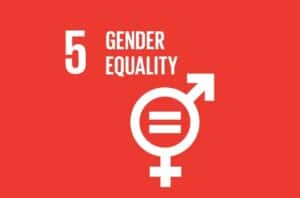
SDG 5 (Beginner – A2)
Did you know that women earn 10 to 30 percent less than men for the same work? Pay inequality is just one example of how…
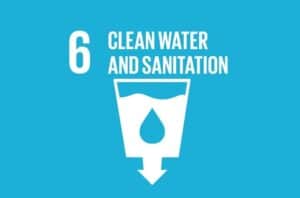
SDG 6 (Beginner – A2)
In many places, people don’t think much about water. They only need to turn a tap to get as much as they need…
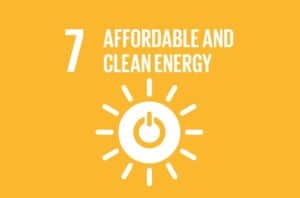
SDG 7 (Beginner – A2)
All people use energy. The lights in our homes, the engines in our cars, the batteries in our devices, all of these…

SDG 8 (Beginner – A2)
In 2012, there was a terrible fire at a clothes factory in Bangladesh. More than 100 people died and 200 others were…
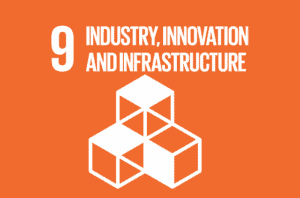
SDG 9 (Beginner – A2)
Did you know that only half of the world’s people are able to use the Internet regularly? That means almost 4 billion…
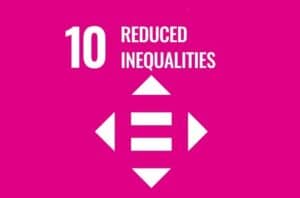
SDG 10 (Beginner – A2)
There are rich people and there are poor people. This is not a surprise. But did you know that the difference between…
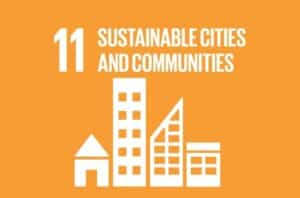
SDG 11 (Beginner – A2)
Did you know that many of the world’s largest cities are in trouble? Jakarta in Indonesia has the most polluted…

SDG 12 (Beginner – A2)
Have you ever heard of “fast fashion”? Fast fashion is cheap, trendy clothing that is worn only a few times and then thrown away…

SDG 13 (Beginner – A2)
The Earth’s climate is changing. Each year there are more extreme weather events such as floods, hurricanes, and forest fires…
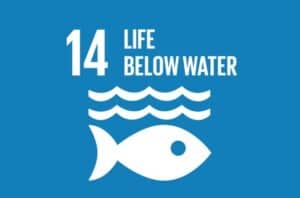
SDG 14 (Beginner – A2)
About 70% of the Earth’s surface is covered with water. There are more creatures living in water than there are living…
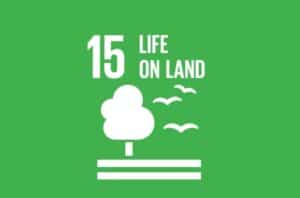
SDG 15 (Beginner – A2)
Starlings are a type of bird that live in Indonesia. They have a beautiful song, and for generations people have kept…

SDG 16 (Beginner – A2)
Every country in the world has laws. These laws should be followed by all people so that everyone can live a peaceful…

SDG 17 (Beginner – A2)
The Sustainable Development Goals are very important to the future of people and the planet. Everyone of us can…
Integrating Sustainable Development Goals (SDGs) into English Language Learning

In today’s interconnected world, preparing students to be global citizens is more crucial than ever. One powerful tool for achieving this is the inclusion of the United Nations’ Sustainable Development Goals (SDGs) in our curricula, particularly in English language learning. These 17 goals address the most pressing issues facing our planet, and integrating them into language lessons not only enhances linguistic skills but also nurtures a sense of responsibility and understanding of global issues.
What Are the SDGs?
The SDGs are a set of 17 global goals adopted by all United Nations Member States in 2015. They serve as a universal call to action to end poverty, protect the planet, and ensure prosperity for all by 2030. Each goal has specific targets to be achieved, offering a roadmap for a better and more sustainable future.
How Are the SDGs Measured?
To measure progress toward the SDGs, a robust system of indicators has been established. These indicators are specific, measurable, achievable, relevant, and time-bound (SMART), providing a framework for tracking advancements in each goal. Regular reports and assessments at the global, regional, and national levels help identify areas of success and challenges, guiding efforts to accelerate progress.
Incorporating the SDGs into education ensures that future generations are not only aware of these critical global challenges but also equipped with the skills and knowledge to contribute meaningfully to their achievement. By integrating these goals into language learning, educators play a pivotal role in shaping informed, empathetic, and globally conscious individuals.
Why Are the SDGs Important?
Global Relevance: The SDGs address issues that affect everyone, regardless of geographic location. From quality education to clean water and sanitation, these goals create a shared global agenda for a brighter future.
Interconnected Challenges: The goals recognize that challenges are interconnected. For example, addressing poverty may also contribute to better health and education outcomes. This interconnectedness mirrors the complex nature of our world, encouraging a holistic approach to problem-solving.
Inclusivity: The SDGs promote inclusivity by leaving no one behind. This inclusivity fosters a sense of shared responsibility and emphasizes the importance of diversity in finding sustainable solutions.
Why Integrate SDGs into Language Learning?
Real-world Context:
- SDGs provide real-world context for language learning. Instead of isolated language exercises, students engage with topics that have a direct impact on their lives and the world around them.
- Example: Discussing Goal 13 (Climate Action) not only improves language skills but also raises awareness about the environment.
Authentic Materials:
- SDGs offer a wealth of authentic materials such as articles, videos, and reports. These materials expose students to a variety of voices and perspectives, enhancing their understanding of global issues.
- Example: Reading articles about Goal 3 (Good Health and Well-being) introduces medical vocabulary and encourages critical thinking about healthcare.
Cultural Sensitivity:
- Exploring the SDGs exposes students to diverse cultures and global perspectives. This fosters cultural sensitivity and prepares them to communicate effectively in multicultural environments.
- Example: Discussing Goal 4 (Quality Education) allows students to compare educational systems worldwide, promoting cultural awareness.
Critical Thinking:
- Analyzing the SDGs encourages critical thinking. Students evaluate information, identify solutions, and develop their ability to express opinions and argue persuasively.
- Example: Debating solutions for Goal 1 (No Poverty) hones critical thinking skills while practicing language use.
Communication Skills:
- SDGs provide a platform for developing communication skills. Students engage in discussions, debates, and collaborative projects, improving both oral and written communication.
- Example: Collaborating on a project related to Goal 5 (Gender Equality) enhances teamwork and communication skills.
Incorporating SDGs: Practical Tips for Teachers
Theme-based Units:
- Create language lessons centered around specific SDGs. For example, dedicate a month to Goal 12 (Responsible Consumption and Production) and design vocabulary, reading, and writing exercises related to sustainable practices.
Multimedia Resources:
- Utilize multimedia resources like documentaries, interviews, and podcasts related to the SDGs. This exposes students to diverse accents and enhances listening skills.
Collaborative Projects:
- Encourage collaborative projects where students work together to propose solutions for a specific SDG. This not only improves language skills but also cultivates teamwork and problem-solving abilities.
Debates and Discussions:
- Organize debates and discussions on SDGs, allowing students to express their opinions on global issues. This enhances both speaking and listening skills.
Reflection Journals:
- Introduce reflection journals where students can express their thoughts on how language learning connects to real-world issues. This promotes self-awareness and critical reflection.
The SDGs in Detail
Eradicating Poverty: Goal 1 focuses on ending poverty in all its forms everywhere. Poverty is not only a matter of economic well-being but also impacts access to education, healthcare, and basic human rights. Achieving this goal contributes to a more just and equal world.
Zero Hunger: Goal 2 addresses the urgent need to eliminate hunger, achieve food security, and promote sustainable agriculture. Ensuring everyone has access to nutritious food is fundamental for health and well-being.
Good Health and Well-being: Goal 3 aims to ensure healthy lives and promote well-being for all at all ages. This includes tackling diseases, improving maternal health, and providing universal health coverage, emphasizing the interconnectedness of physical and mental health.
Quality Education: Goal 4 underscores the importance of inclusive and equitable quality education. Education is a powerful tool for breaking the cycle of poverty and fostering a more informed and empowered global citizenry.
Gender Equality: Goal 5 advocates for gender equality and the empowerment of all women and girls. This involves dismantling barriers to education, addressing gender-based violence, and ensuring equal opportunities in all spheres of life.
Clean Water and Sanitation: Goal 6 highlights the need for clean water and sanitation for all. Access to clean water is not only a basic human right but also a prerequisite for health, education, and economic development.
Affordable and Clean Energy: Goal 7 calls for ensuring access to affordable, reliable, sustainable, and modern energy for all. This is crucial for economic development and combating climate change.
Decent Work and Economic Growth: Goal 8 seeks to promote sustained, inclusive, and sustainable economic growth, full and productive employment, and decent work for all. This involves addressing issues like labor rights and creating an environment for entrepreneurship.
Industry, Innovation, and Infrastructure: Goal 9 encourages the development of resilient infrastructure, promoting inclusive and sustainable industrialization, and fostering innovation. These are essential elements for building strong and prosperous societies.
Reduced Inequality: Goal 10 focuses on reducing inequality within and among countries. This involves addressing income disparities, social exclusion, and discrimination.
Sustainable Cities and Communities: Goal 11 emphasizes the importance of making cities inclusive, safe, resilient, and sustainable. Urban areas play a central role in addressing various social and environmental challenges.
Responsible Consumption and Production: Goal 12 calls for responsible consumption and production patterns. This involves minimizing waste, promoting sustainable practices, and ensuring efficient use of resources.
Climate Action: Goal 13 tackles climate change and its impacts. Urgent action is needed to combat climate change and its effects, which affect vulnerable communities and ecosystems worldwide.
Life Below Water: Goal 14 focuses on conserving and sustainably using the oceans, seas, and marine resources. This includes addressing issues like overfishing and marine pollution.
Life on Land: Goal 15 aims to protect, restore, and promote sustainable use of terrestrial ecosystems. This involves combating deforestation, desertification, and biodiversity loss.
Peace, Justice, and Strong Institutions: Goal 16 seeks to promote peaceful and inclusive societies for sustainable development, provide access to justice for all, and build effective, accountable, and inclusive institutions at all levels.
Partnerships for the Goals: Goal 17 recognizes the importance of global partnerships to achieve the SDGs. Collaboration between governments, the private sector, civil society, and the international community is crucial for making progress.
Conclusion
In conclusion, integrating the SDGs into English language learning not only enriches language skills but also cultivates global awareness and responsible citizenship. By embracing these goals, we empower our students to become effective communicators, critical thinkers, and active contributors to a more sustainable world.
